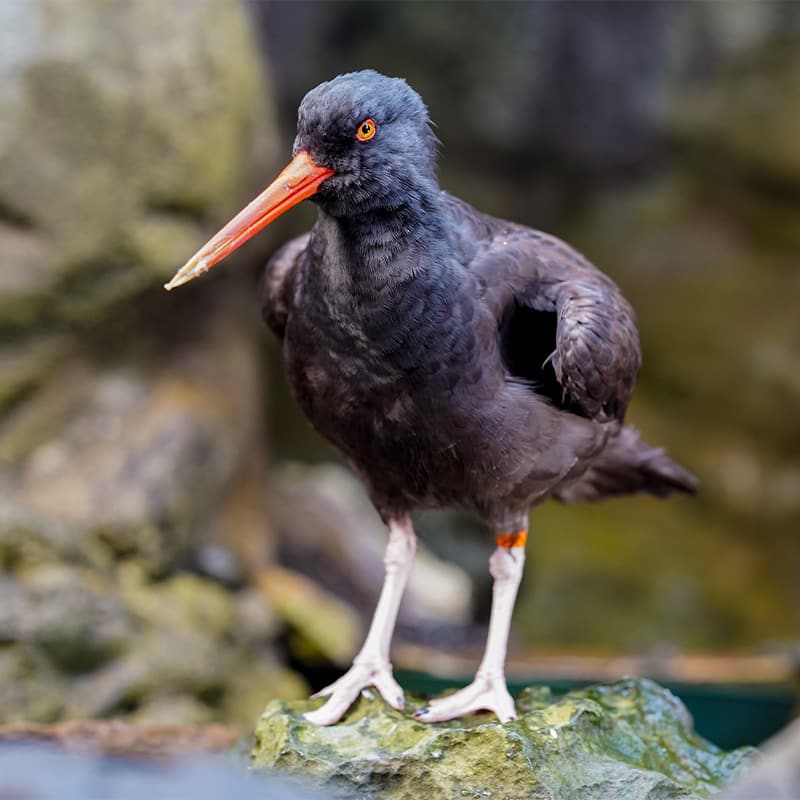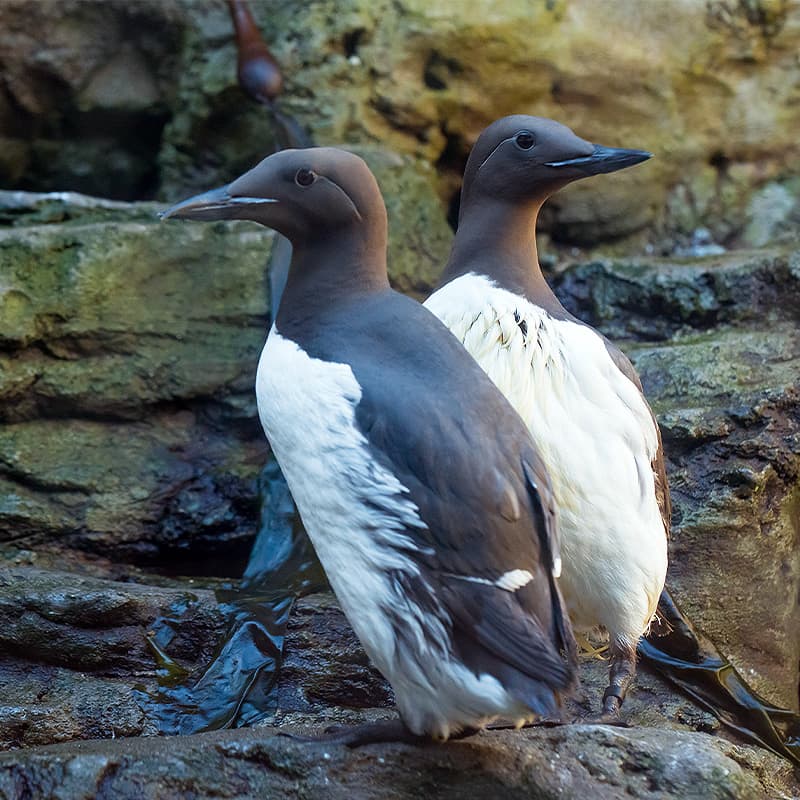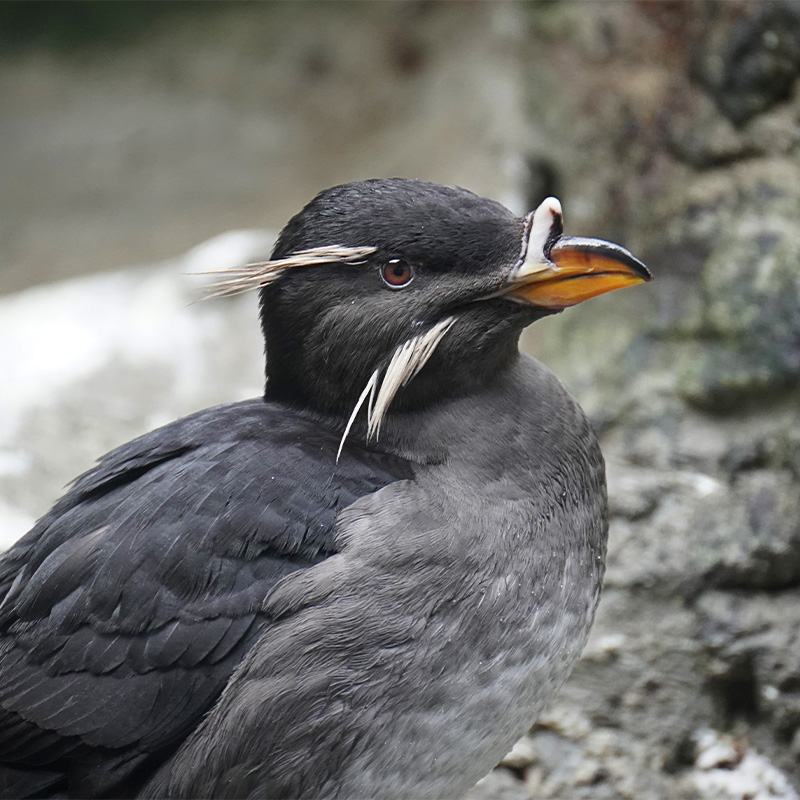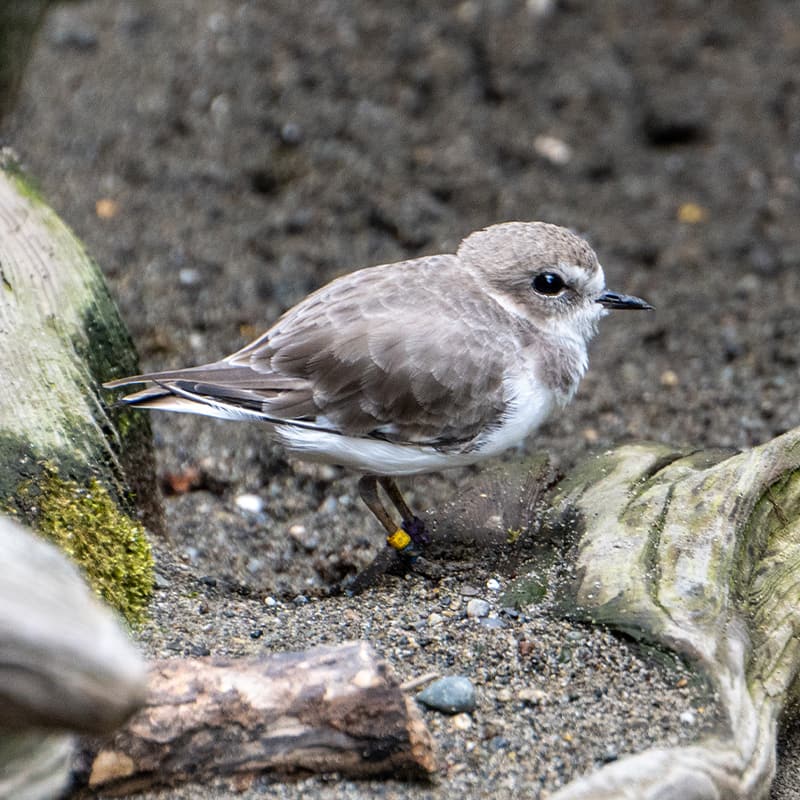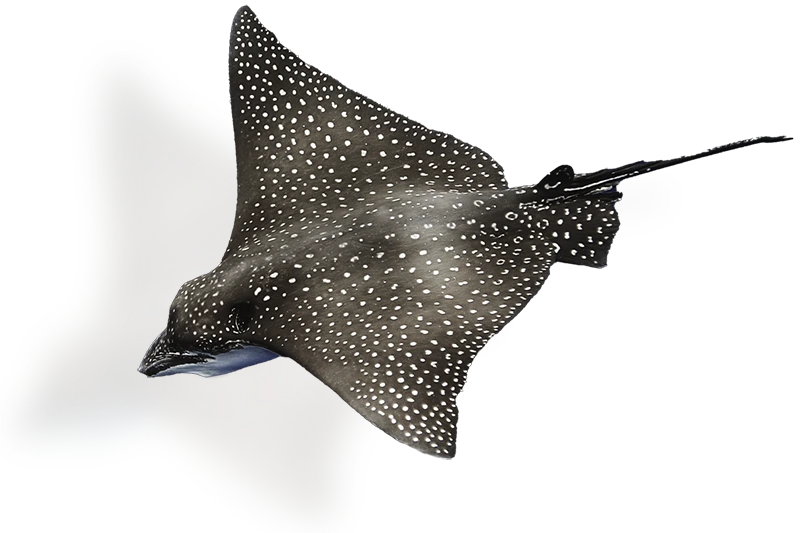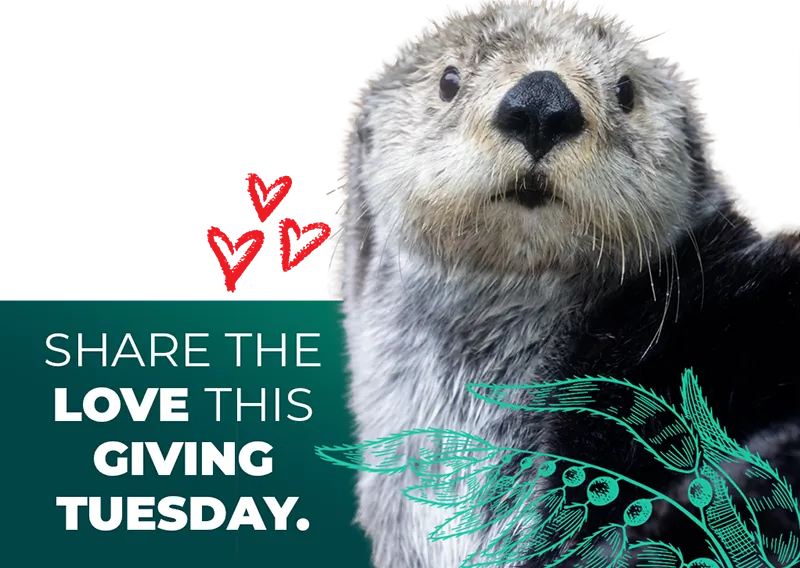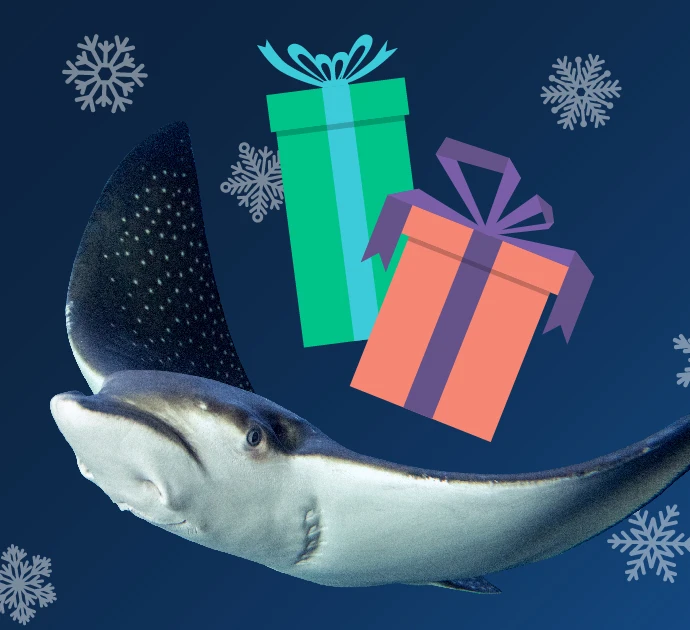- Birds
Tufted puffin
“The parrots of the sea”
Tufted puffins, Fratercula cirrhata, are known as the “parrots of the sea” because of their distinctive and bright coloring during the summer breeding season. Keep reading to see how they change in the winter!
At the Aquarium
- Bird habitats, Pier 60
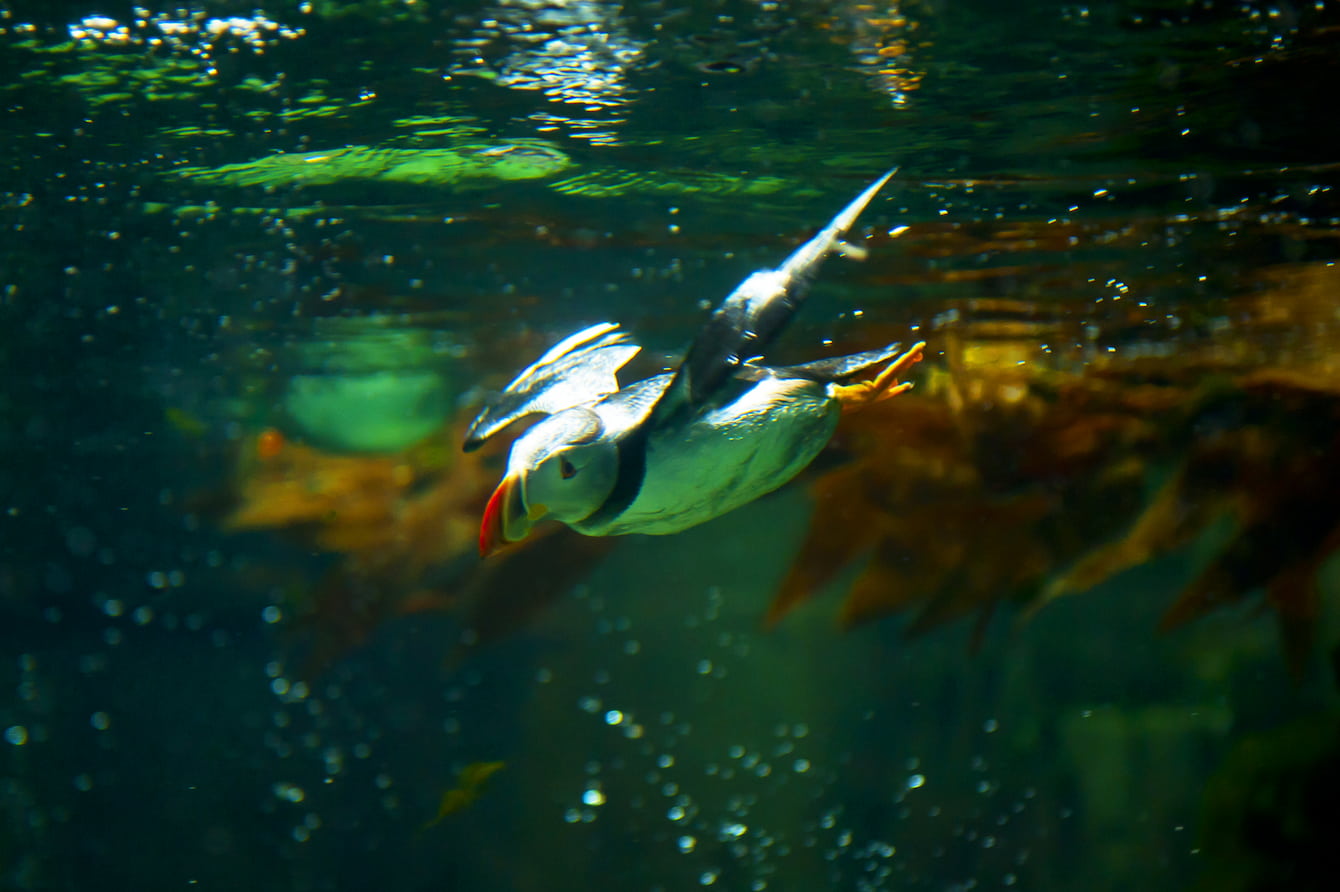
Hungry divers
Tufted puffins are alcids—diving birds that make their homes in the Northern Hemisphere. Like all alcids, they appear to “fly” underwater while diving for small, schooling prey such as silversides, herring, krill, squid and shrimp. Puffins can dive to depths of up to 100 feet and remain underwater for up to two minutes while searching for food. When bringing food back to the nest for their chicks, puffins can capture and hold anywhere from five to 20 small fish crosswise in their bills! If puffins are hunting only for themselves, they consume their meals while still underwater.
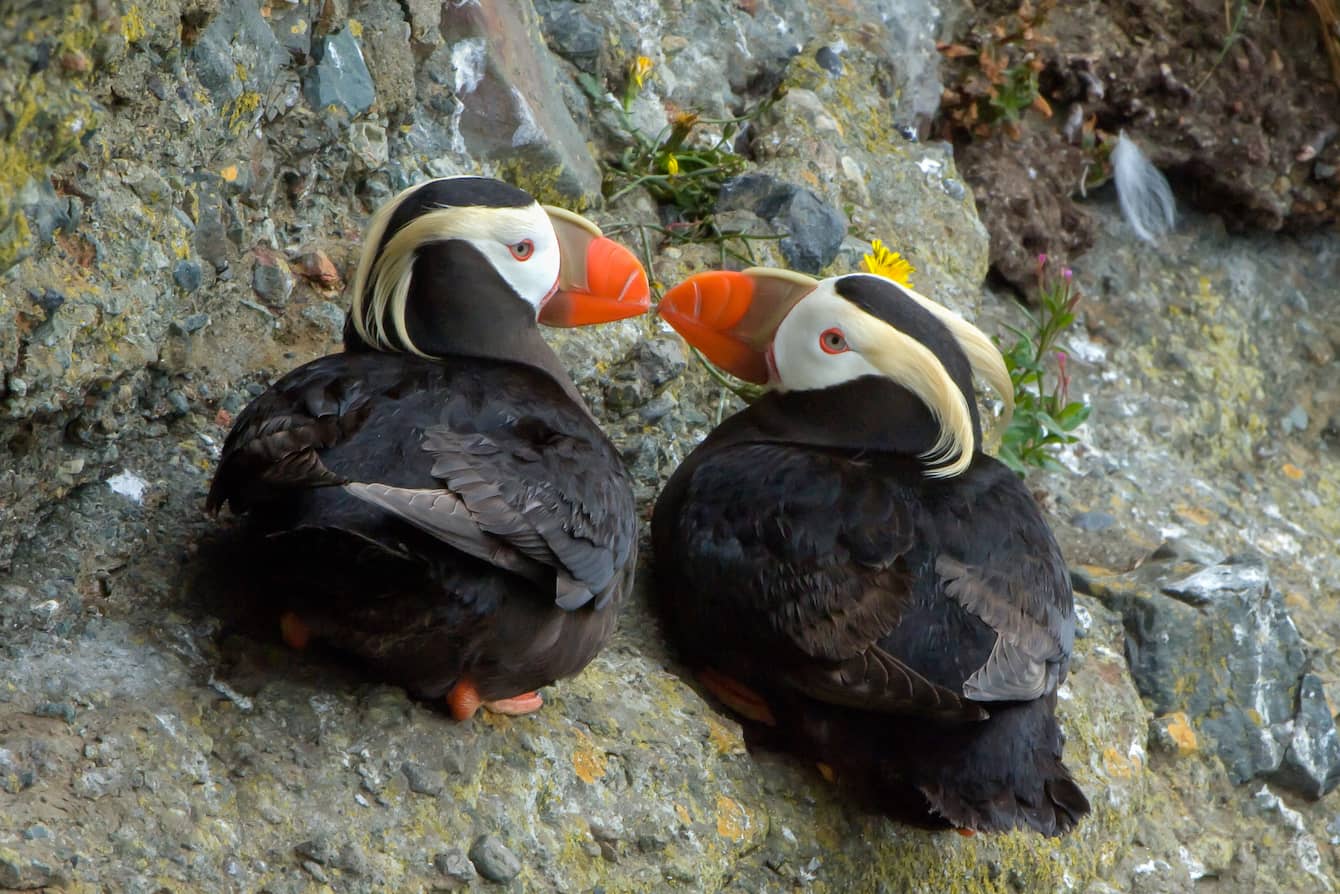
Love will keep us together
Tufted puffins tend to be monogamous and often form lifetime partnerships after they begin breeding at approximately three years of age. Pairs form during courtship displays. Males and females return to the same burrow each year (sometimes after spending the winter at sea together) and prepare their home for the arrival of a chick by cleaning and lengthening it. Females usually lay just one egg, which both parents take turns incubating until the chick hatches about six weeks later. Chicks remain in the burrow for about six weeks, then “fly the coop” and begin to live independently.
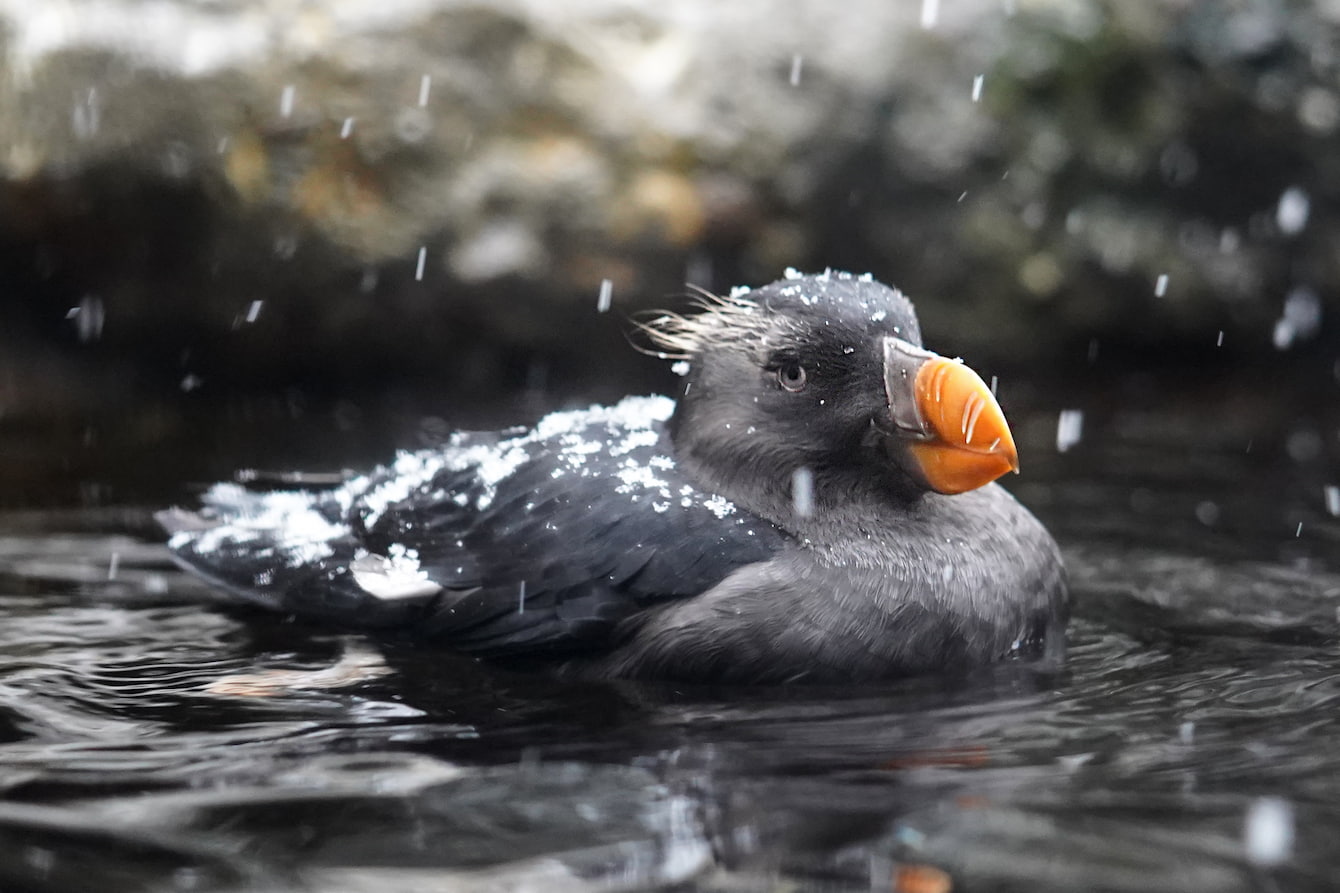
Summer vs. winter plumage
All birds molt, or periodically shed all or part of their feathers. Some birds, like tufted puffins, also shed their bill coverings. Tufted puffins display an ornamental bill plate, as well as brilliant orange legs, a white “face mask” and distinctive golden tufts above the eyes during the summer breeding season. In the winter, the color of their legs becomes dull, their brilliant white “mask” is replaced with dark feathers, their tufts disappear and their bill plate falls off.
Winters at sea
Tufted puffins are pelagic, which means they spend their winters living on the open ocean and return to shore for the breeding season. When on shore, tufted puffins live along rocky coastlines and nest primarily in deep burrows that they dig into cliff faces or slopes. These burrows can be up to five feet deep—that’s a lot of digging!
Help care for tufted puffins
Tufted puffins are supremely well-adapted to life at sea. But, like all animals, they need a healthy, safe environment in order to thrive. Human-caused hazards such as oil spills, fishing nets, pesticides and habitat destruction pose the biggest threats to tufted puffins. When you take action to care for the ocean, you’re also helping tufted puffins!
Quick facts
These birds dive underwater to catch their dinner.
A baby puffin is called a “puffling.” Too cute!
Tufted puffins sport ornamental plumage above their eyes during their breeding season.
